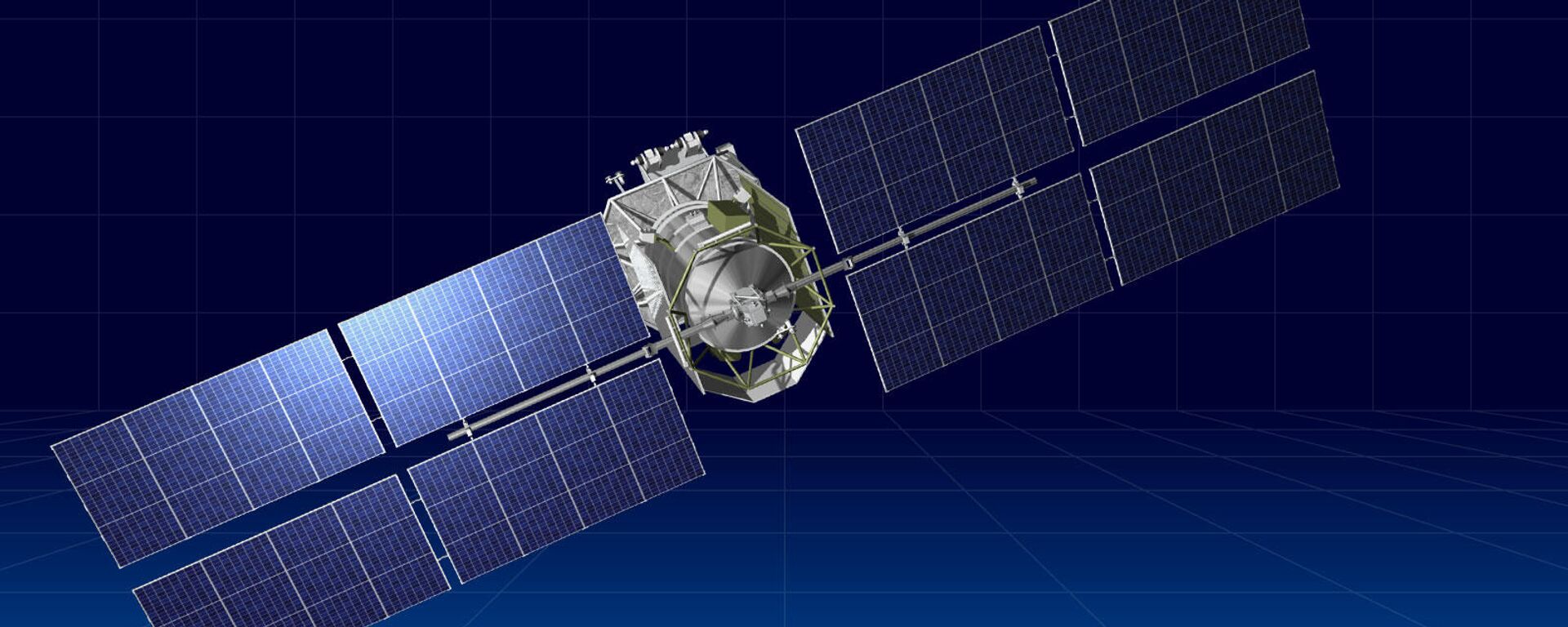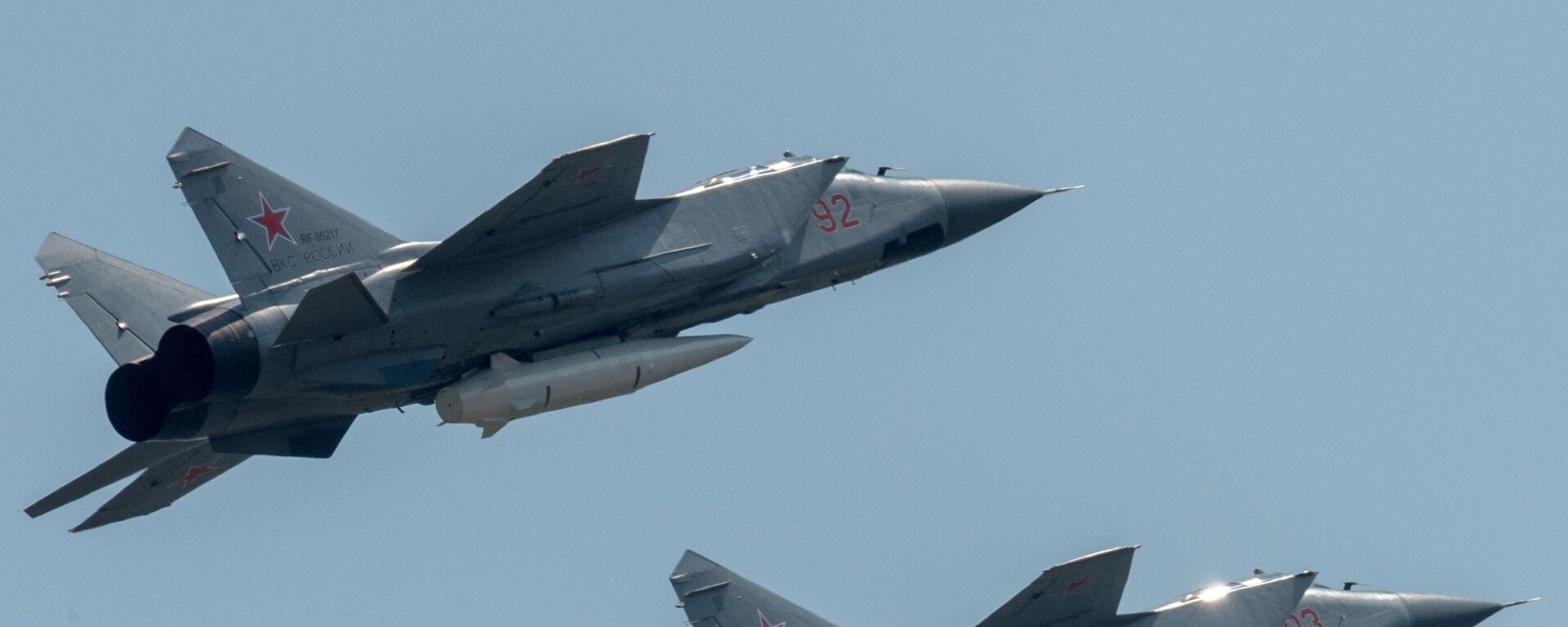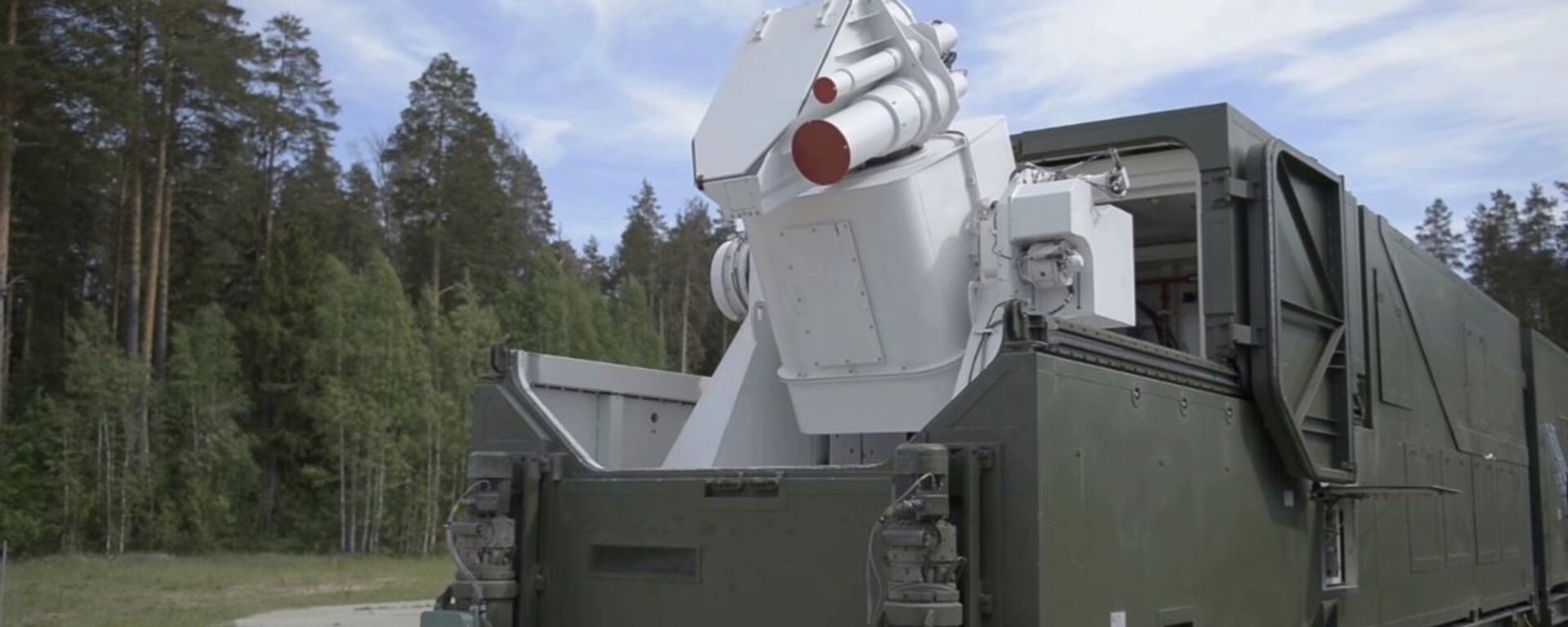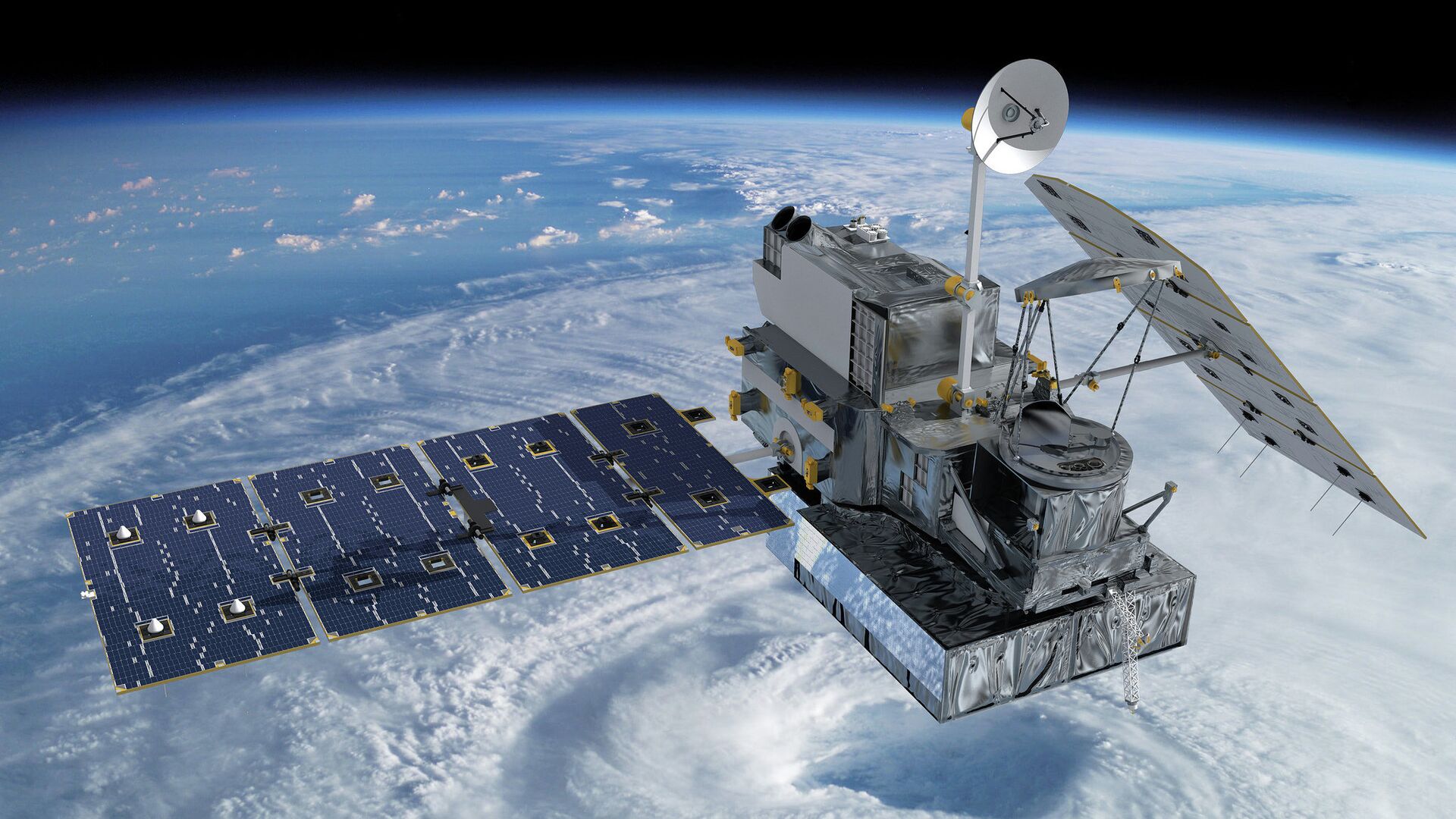https://sputnikglobe.com/20240215/what-are-russias-top-5-anti-satellite-systems-1116802215.html
What are Russia's Top 5 Anti-Satellite Systems?
What are Russia's Top 5 Anti-Satellite Systems?
Sputnik International
Russia has effective means to thwart adversary satellites, including arms based on new physical principles. What are they?
2024-02-15T16:31+0000
2024-02-15T16:31+0000
2024-02-15T16:31+0000
military
russia
sputnik explains
igor korotchenko
moscow
washington
weapons
satellite
spy satellite
satellite data
https://cdn1.img.sputnikglobe.com/img/102130/05/1021300517_0:193:2048:1345_1920x0_80_0_0_a761293eef0ccf91ce2aa2f37bf5ea80.jpg
Moscow trashed the groundless rumors of its alleged efforts to deploy a nuclear anti-satellite system in space on February 15.A day earlier, mainstream US media claimed that Washington had informed Congress and its European allies about Russia's work on a new, space-based nuclear weapon designed to undermine the US satellite network.A new bugaboo about Russia's supposed plans to destroy American satellites with nuclear arms is aimed at ramming a $60 billion funding package for Ukraine through US Congress, military analyst and editor-in-chief of the National Defense magazine Igor Korotchenko told Sputnik on Thursday. Even though the package in question was earlier passed in the US Senate as part of a $95 billion bill, the chances of the House approving the legislation is considered slim.According to Korotchenko, Russia has cheaper and more effective means of anti-satellite warfare than those that Washington accuses it of developing.“This is a question of approaches. The fact is that the deployment of nuclear weapons in space is ineffective in terms of its use, especially given that Russia has much simpler and cheaper means to disable, in the event of hostilities, a significant part of the US satellite constellation," the expert underscored.Sputnik has taken a look at the systems that could do the job.The Nudol SystemOn November 15, 2021, Moscow conducted a direct-ascent hit-to-kill anti-satellite (ASAT) test using the A-235 Nudol anti-satellite system. The test shot down an old Soviet reconnaissance satellite launched back in 1982.In contrast to its predecessor, the A-235 may use kinetic force, not nuclear or high-explosive fragmentation, to destroy the target.The development of the A-235 Nudol started in 1985-1986 and was carried out in compliance with international ballistic missile agreements existing at the time. The weapon was designed to become the first Soviet mobile missile defense system capable of intercepting intercontinental-range missiles, spacecraft and satellites operating at high orbits.Immediately after the Cold War, the development of the A-235 was suspended and restarted in 2011 by Almaz-Antey, nine years after the Bush administration unilaterally terminated the Antiballistic Missile Treaty (ABM) in 2002.The system has been tested several times since 2014; however, in November 2021 the missile was fired at a specific moving space target and eventually destroyed it, causing a fuss in the Pentagon.Nanosatellites: Nivelir, Burevestnik and NumismatThe development of Russia's secretive project Nivelir ("Leveler") has reportedly been carried out by the Central Scientific Research Institute of Chemistry and Mechanics Named after D.I. Mendeleyev since 2011.The endeavor supposedly envisaged building small satellites designed to inspect other satellites in space. The first three satellite-inspectors were reportedly attached to three communications satellites launched between 2013 and 2015.According to other sources, Russia has been experimenting with satellite inspectors since 2017. The satellites maneuvered in orbit, moving away from each other and then getting closer. In 2019, the Cosmos-2535 and Cosmos-2536 devices were launched. Their goal was to study the impact of "artificial and natural factors of outer space" on Russia's space devices and to develop "technology for their protection."The Burevestnik project (not to be confused with the ballistic missile) is reportedly being developed on the basis of the Nivelir project. The spacecraft is allegedly capable of tracking many fast-moving objects in space at once, including missiles and satellites in high orbits. The so-called Numismat ("Numismatist", or "coin collector") radar systems for near space is also said to be developed in Russia. These are also "nanosatellites" that are difficult to detect.The Kontakt SystemThe USSR started to develop the 30P6 Kontakt ("Contact") system in 1983. The 79М6 munition – a three-stage rocket – was supposed to be mounted on the MiG-31D fighter-interceptor. Launched from an airplane at an altitude of 15 kilometers the munition was designed to fire a fragmentation warhead into space. It was assumed that the Kontakt system would be a stealth and inexpensive means of destroying enemy satellites.The MiG-31 fighter was picked since it can fly at extreme altitudes in the stratosphere while carrying large non-standard missiles and firing all types of weapons at maximum altitude. In addition, the MiG-31's capabilities allow it to carry large-caliber anti-satellite weapons.The secretive project was frozen after the collapse of the USSR, but in 2009, Russia announced the resumption of work on Kontakt using the MiG-31. According to the media, the Russian military is currently testing the upgraded version of the system.The Tirada Electronic Warfare System According to the Russian Ministry of Defense, the Tirada-2S radio-electronic communication suppression system is capable of electronically jamming satellite communications with complete disabling. In this case, satellites can be deactivated directly from the Earth's surface.There is little information about the system's specifications in the public domain. The system was first mentioned by the deputy head of the 46th Central Research Institute of the Russian Ministry of Defense Oleg Achasov in 2017. Achasov said that the Tirada-2S mobile complex to jam communication satellites was created as part of the weapons modernization program for 2018-2027.A year later, at the international military-technical forum "Army-2018" a contract was signed for the supply of an automated satellite communication jamming station "Tirada 2.3" to the Russian military.In 2020, the mysterious electronic warfare was tested by the personnel of the Central Military District in the Sverdlovsk region. The Ministry of Defense noted at the time that "the crews of the Tirada complex trained the detection of satellite communication channels that provide a cycle of combat control and data transmission by reconnaissance aircraft and sabotage groups of a mock enemy. Having identified the channel and belonging to a space satellite, the Tirada crews conducted suppression and set up controlled interference to prevent the signal from passing through."The Peresvet Laser SystemOn March 1, 2018, Russian President Vladimir Putin first mentioned Russia's laser weapon for air defense and anti-satellite warfare, the Peresvet, during his address to the Federal Assembly.The Peresvet, named after a medieval Orthodox warrior monk Alexander Peresvet, entered experimental combat duty in the Russian Armed Forces in December 2018. By February 2019, the Russian president announced the laser installations had confirmed their unique characteristics along with the Kinzhal hypersonic missiles.The aforementioned systems are just a few of those potentially developed by the Russian military-industrial complex, indicating that Russia is capable of using its decades-long scientific and technological potential to ensure the nation's security in the event of a large-scale conflict.
https://sputnikglobe.com/20240214/no-reason-to-panic-about-purported-national-security-threat-us-lawmaker-says--1116784875.html
https://sputnikglobe.com/20231004/how-russias-space-forces-disable-starlink-satellites-without-breaking-international-law-1113930681.html
https://sputnikglobe.com/20231207/russian-scientists-suggest-new-means-of-satellite-control--1115460048.html
https://sputnikglobe.com/20231218/why-russias-mystical-mig-31-fighters-strike-fear-across-ukraine-1115655555.html
https://sputnikglobe.com/20230916/krasukha-russias-new-unrivalled-electronic-warfare-system-1113415601.html
https://sputnikglobe.com/20230921/sci-fi-turned-into-reality-russian-laser-weapons-successfully-tested-in-combat-1113566461.html
russia
moscow
washington
Sputnik International
feedback@sputniknews.com
+74956456601
MIA „Rossiya Segodnya“
2024
News
en_EN
Sputnik International
feedback@sputniknews.com
+74956456601
MIA „Rossiya Segodnya“
Sputnik International
feedback@sputniknews.com
+74956456601
MIA „Rossiya Segodnya“
russia, anti-satellite systems, nuclear weapons in space, tirada, mig-31d, russian laser weapons, peresvet, russian satellite inspectors, outer space, spacecraft, satellite constellation
russia, anti-satellite systems, nuclear weapons in space, tirada, mig-31d, russian laser weapons, peresvet, russian satellite inspectors, outer space, spacecraft, satellite constellation
What are Russia's Top 5 Anti-Satellite Systems?
Russia has effective means to thwart adversary satellites, including arms based on new physical principles. What are they?
Moscow
trashed the groundless rumors of its alleged efforts to deploy a nuclear anti-satellite system in space on February 15.
A day earlier, mainstream US media claimed that Washington had informed Congress and its European allies about Russia's work on a new, space-based nuclear weapon designed to undermine the US satellite network.

14 February 2024, 18:32 GMT
A new bugaboo about Russia's supposed plans to destroy American satellites with nuclear arms is aimed at ramming a $60 billion funding package for Ukraine through US Congress, military analyst and editor-in-chief of the National Defense magazine Igor Korotchenko told Sputnik on Thursday. Even though the package in question was earlier passed in the US Senate as part of a $95 billion bill, the chances of the House approving the legislation is considered slim.
According to Korotchenko, Russia has cheaper and more effective means of anti-satellite warfare than those that Washington accuses it of developing.
“This is a question of approaches. The fact is that the deployment of nuclear weapons in space is ineffective in terms of its use, especially given that Russia has much simpler and cheaper means to disable, in the event of hostilities, a significant part of the US satellite constellation," the expert underscored.
Sputnik has taken a look at the systems that could do the job.

4 October 2023, 17:31 GMT
On November 15, 2021, Moscow conducted a direct-ascent hit-to-kill anti-satellite (ASAT) test using the A-235 Nudol anti-satellite system. The test shot down an old Soviet reconnaissance satellite launched back in 1982.
The A-235 Nudol is an improved modification of the A-135 Amur strategic missile defense system. The missile can hit a target at a distance of up to 1,500 kilometers (versus 850 kilometers for the A-135), while its interception speed is increased to Mach 10 (versus Mach 3.5 for the A-135).
In contrast to its predecessor, the A-235 may use kinetic force, not nuclear or high-explosive fragmentation, to destroy the target.
The development of the A-235 Nudol started in 1985-1986 and was carried out in compliance with international ballistic missile agreements existing at the time. The weapon was designed to become the first Soviet mobile missile defense system capable of intercepting intercontinental-range missiles, spacecraft and satellites operating at high orbits.
Immediately after the Cold War, the development of the A-235 was suspended and restarted in 2011 by Almaz-Antey, nine years after the Bush administration unilaterally terminated the Antiballistic Missile Treaty (ABM) in 2002.
The system has been tested several times since 2014; however, in November 2021 the missile was fired at a specific moving space target and eventually destroyed it, causing a fuss in the Pentagon.

7 December 2023, 18:33 GMT
Nanosatellites: Nivelir, Burevestnik and Numismat
The development of Russia's secretive project Nivelir ("Leveler") has reportedly been carried out by the Central Scientific Research Institute of Chemistry and Mechanics Named after D.I. Mendeleyev since 2011.
The endeavor supposedly envisaged building small satellites designed to inspect other satellites in space. The first three satellite-inspectors were reportedly attached to three communications satellites launched between 2013 and 2015.
According to other sources, Russia has been experimenting with satellite inspectors since 2017. The satellites maneuvered in orbit, moving away from each other and then getting closer. In 2019, the Cosmos-2535 and Cosmos-2536 devices were launched. Their goal was to study the impact of "artificial and natural factors of outer space" on Russia's space devices and to develop "technology for their protection."
It is understood that the idea behind placing satellite-inspectors in specific orbits is to affect "adversary" satellites in various ways, including "inspecting" them, i.e. collecting all necessary information on them.
The Burevestnik project (not to be confused with the ballistic missile) is reportedly being developed on the basis of the Nivelir project. The spacecraft is allegedly capable of tracking many fast-moving objects in space at once, including missiles and satellites in high orbits. The so-called Numismat ("Numismatist", or "coin collector") radar systems for near space is also said to be developed in Russia. These are also "nanosatellites" that are difficult to detect.

18 December 2023, 07:19 GMT
The USSR started to develop the 30P6 Kontakt ("Contact") system in 1983. The 79М6 munition – a three-stage rocket – was supposed to be mounted on the MiG-31D fighter-interceptor.
Launched from an airplane at an altitude of 15 kilometers the munition was designed to fire a fragmentation warhead into space. It was assumed that the Kontakt system would be a stealth and inexpensive means of destroying enemy satellites.
A series of tests ended up in an allegedly successful launch that took place on July 26, 1991. An experimental aircraft Izdeliye "07-2" (MiG-31D) armed with the 79M6 missile suspension took off from the Sary-Shagan airfield over the Bet-Pak Dala training grounds. It is known that two stages of the rocket were solid-propelled, and the last stage, which controlled the final guidance of the kinetic warhead at the target, was liquid.
The MiG-31 fighter was picked since it can fly at extreme altitudes in the stratosphere while carrying large non-standard missiles and firing all types of weapons at maximum altitude. In addition, the MiG-31's capabilities allow it to carry large-caliber anti-satellite weapons.
The secretive project was frozen after the collapse of the USSR, but in 2009, Russia announced the resumption of work on Kontakt using the MiG-31. According to the media, the Russian military is currently testing the upgraded version of the system.

16 September 2023, 10:02 GMT
The Tirada Electronic Warfare System
According to the Russian Ministry of Defense, the
Tirada-2S radio-electronic communication suppression system is capable of
electronically jamming satellite communications with complete disabling. In this case, satellites can be deactivated directly from the Earth's surface.
There is little information about the system's specifications in the public domain. The system was first mentioned by the deputy head of the 46th Central Research Institute of the Russian Ministry of Defense Oleg Achasov in 2017. Achasov said that the Tirada-2S mobile complex to jam communication satellites was created as part of the weapons modernization program for 2018-2027.
A year later, at the international military-technical forum "Army-2018" a contract was signed for the supply of an automated satellite communication jamming station "Tirada 2.3" to the Russian military.
In 2020, the mysterious electronic warfare was tested by the personnel of the Central Military District in the Sverdlovsk region. The Ministry of Defense noted at the time that "the crews of the Tirada complex trained the detection of satellite communication channels that provide a cycle of combat control and data transmission by reconnaissance aircraft and sabotage groups of a mock enemy. Having identified the channel and belonging to a space satellite, the Tirada crews conducted suppression and set up controlled interference to prevent the signal from passing through."

21 September 2023, 20:22 GMT
The Peresvet Laser System
On March 1, 2018, Russian President Vladimir Putin first mentioned
Russia's laser weapon for air defense and anti-satellite warfare, the Peresvet, during his address to the Federal Assembly.
The Peresvet, named after a medieval Orthodox warrior monk Alexander Peresvet, entered experimental combat duty in the Russian Armed Forces in December 2018. By February 2019, the Russian president announced the laser installations had confirmed their unique characteristics along with the Kinzhal hypersonic missiles.
According to Russian military observers, the laser system is capable of blinding the optical systems of reconnaissance satellites, drones, and aircraft. The Peresvet project remains classified, so it's hard to say what type of laser it is equipped with. Some scientists believe that this is a nuclear-pumped laser, others believe that the complex uses an oxygen-iodine laser (OIL) with iodine explosive pumping.
The aforementioned systems are just a few of those potentially developed by the Russian military-industrial complex, indicating that Russia is capable of using its decades-long scientific and technological potential
to ensure the nation's security in the event of a large-scale conflict.








